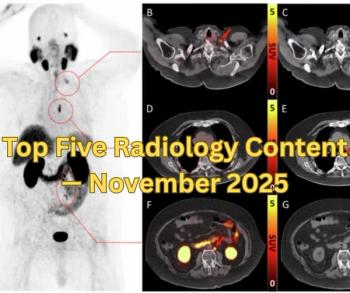
- Diagnostic Imaging Vol 32 No 10
- Volume 32
- Issue 10
Imaging technique proves useful for ovarian cancer
A molecular imaging technique may prove useful in early assessment of treatment response for cisplatin-resistant ovarian cancer, according to a study published in the Journal of Nuclear Medicine.
A molecular imaging technique may prove useful in early assessment of treatment response for cisplatin-resistant ovarian cancer, according to a study published in the Journal of Nuclear Medicine. Cisplatin is often effective against ovarian cancer when first given, but tumors can become resistant and start growing again.
The study showed F-18 fluorothymidine (F-FLT) PET was able to predict early response to everolimus (a mammalian target of rapamycin inhibitor) in cisplatin-resistant ovarian cancer in mice. The technique should be considered for therapeutic assessment in humans, according to the researchers.
No significant change in tumor F-FLT uptake was observed in the controls. In the everolimus-treated mice, F-FLT standard uptake value decreased by 33% on the second day of treatment and by 66% on the seventh day. There were also changes in tumor volume.
Articles in this issue
about 15 years ago
Coronary CTA really works, but why isn't its use soaring?about 15 years ago
Case of the Monthabout 15 years ago
Small pulmonary emboli still stump radiologistsabout 15 years ago
Leukemia joins radiation risks for interventionalistsabout 15 years ago
MRI reveals when cognitive impairment will advanceabout 15 years ago
Incidental findings can predict cardiac diseaseabout 15 years ago
Delayed cardiac test saves moneyabout 15 years ago
The deck is stacked against coronary CTA; why it mattersabout 15 years ago
We spend on end-of-life care at expense of patientsabout 15 years ago
LifeImage takes sting out of viewing patient CDsNewsletter
Stay at the forefront of radiology with the Diagnostic Imaging newsletter, delivering the latest news, clinical insights, and imaging advancements for today’s radiologists.



























